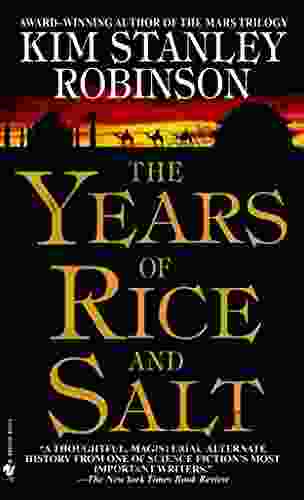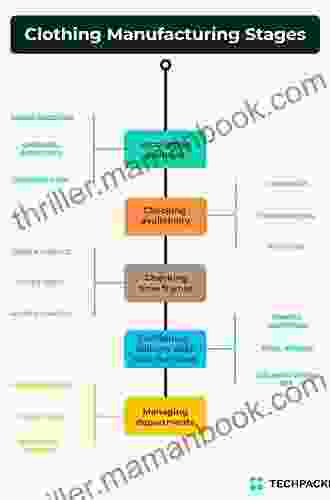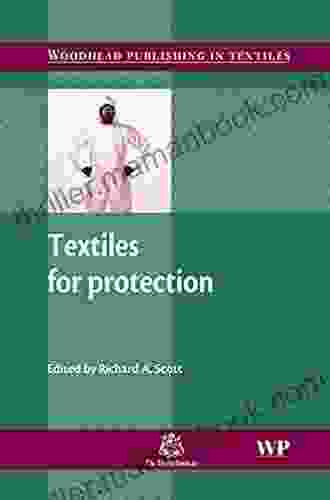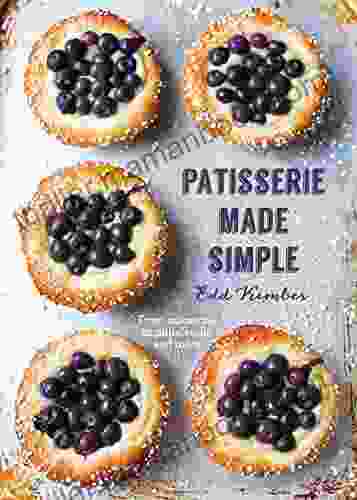Textiles for Protection: A Comprehensive Guide from Woodhead Publishing in Textiles

Textiles play a crucial role in our daily lives, providing comfort, warmth, and style. However, textiles can also be engineered to provide protection against a wide range of hazards, from fire and heat to bullets and knives. This article provides a comprehensive overview of the various types of textiles used for protection, their properties, and applications.
4.4 out of 5
| Language | : | English |
| File size | : | 21606 KB |
| Text-to-Speech | : | Enabled |
| Screen Reader | : | Supported |
| Enhanced typesetting | : | Enabled |
| Print length | : | 784 pages |
Types of Protective Textiles
There are many different types of protective textiles, each designed to meet specific requirements. Some of the most common types include:
- Flame-resistant fabrics are designed to resist ignition and slow the spread of flames. These fabrics are often used in clothing for firefighters, welders, and other workers who are exposed to high temperatures.
- Bulletproof materials are designed to stop or deflect bullets. These materials are often used in body armor for police officers, soldiers, and security guards.
- Cut-resistant fabrics are designed to resist cuts and punctures. These fabrics are often used in clothing for workers who handle sharp objects, such as butchers and surgeons.
- Chemical-resistant fabrics are designed to protect against exposure to hazardous chemicals. These fabrics are often used in clothing for workers who handle chemicals, such as laboratory technicians and chemical plant operators.
- Radiation-resistant fabrics are designed to protect against exposure to radiation. These fabrics are often used in clothing for workers who work in nuclear power plants and other areas where radiation is present.
Properties of Protective Textiles
The properties of protective textiles vary depending on the type of fabric and the intended application. However, some of the most important properties include:
- Strength: Protective textiles must be strong enough to withstand the hazards they are designed to protect against. This strength is typically measured in terms of tensile strength, tear strength, and puncture resistance.
- Durability: Protective textiles must be durable enough to withstand repeated use and exposure to harsh conditions. This durability is typically measured in terms of abrasion resistance, fading resistance, and chemical resistance.
- Comfort: Protective textiles must be comfortable to wear, even for extended periods of time. This comfort is typically measured in terms of breathability, moisture wicking, and softness.
- Cost: Protective textiles must be cost-effective to produce and use. This cost is typically measured in terms of the initial purchase price, the cost of maintenance, and the cost of replacement.
Applications of Protective Textiles
Protective textiles are used in a wide range of applications, including:
- Firefighting: Flame-resistant fabrics are used in clothing for firefighters to protect them from burns and heat.
- Law enforcement: Bulletproof materials are used in body armor for police officers to protect them from bullets and other projectiles.
- Healthcare: Cut-resistant fabrics are used in clothing for surgeons and other healthcare workers to protect them from cuts and punctures.
- Chemical industry: Chemical-resistant fabrics are used in clothing for workers who handle chemicals to protect them from exposure to hazardous chemicals.
- Nuclear industry: Radiation-resistant fabrics are used in clothing for workers who work in nuclear power plants and other areas where radiation is present.
The Future of Protective Textiles
The future of protective textiles is bright. As technology advances, new and innovative materials are being developed that offer improved protection against a wider range of hazards. These new materials are lighter, more comfortable, and more durable than traditional protective fabrics. As a result, protective textiles are becoming increasingly popular in a variety of applications.
Textiles for protection are essential for ensuring the safety and security of workers and civilians around the world. These textiles offer protection against a wide range of hazards, from fire and heat to bullets and knives. As technology advances, new and innovative protective textiles are being developed that offer improved protection and comfort. As a result, the future of protective textiles is bright.
4.4 out of 5
| Language | : | English |
| File size | : | 21606 KB |
| Text-to-Speech | : | Enabled |
| Screen Reader | : | Supported |
| Enhanced typesetting | : | Enabled |
| Print length | : | 784 pages |
Do you want to contribute by writing guest posts on this blog?
Please contact us and send us a resume of previous articles that you have written.
 Top Book
Top Book Novel
Novel Fiction
Fiction Nonfiction
Nonfiction Literature
Literature Paperback
Paperback Hardcover
Hardcover E-book
E-book Audiobook
Audiobook Bestseller
Bestseller Classic
Classic Mystery
Mystery Thriller
Thriller Romance
Romance Fantasy
Fantasy Science Fiction
Science Fiction Biography
Biography Memoir
Memoir Autobiography
Autobiography Poetry
Poetry Drama
Drama Historical Fiction
Historical Fiction Self-help
Self-help Young Adult
Young Adult Childrens Books
Childrens Books Graphic Novel
Graphic Novel Anthology
Anthology Series
Series Encyclopedia
Encyclopedia Reference
Reference Guidebook
Guidebook Textbook
Textbook Workbook
Workbook Journal
Journal Diary
Diary Manuscript
Manuscript Folio
Folio Pulp Fiction
Pulp Fiction Short Stories
Short Stories Fairy Tales
Fairy Tales Fables
Fables Mythology
Mythology Philosophy
Philosophy Religion
Religion Spirituality
Spirituality Essays
Essays Critique
Critique Commentary
Commentary Glossary
Glossary Bibliography
Bibliography Index
Index Table of Contents
Table of Contents Preface
Preface Introduction
Introduction Foreword
Foreword Afterword
Afterword Appendices
Appendices Annotations
Annotations Footnotes
Footnotes Epilogue
Epilogue Prologue
Prologue Miranda Paul
Miranda Paul Joshuasaurus 319
Joshuasaurus 319 Dick Gephardt
Dick Gephardt Annette Lacroix
Annette Lacroix Christopher Yost
Christopher Yost Neal Sehgal
Neal Sehgal Kevin L Gyoerkoe
Kevin L Gyoerkoe Orhan Pamuk
Orhan Pamuk Joe Haldeman
Joe Haldeman Joshua Coleman Ph D
Joshua Coleman Ph D Robert Mcnally
Robert Mcnally Lara Smithe
Lara Smithe Sujata Massey
Sujata Massey Kevin D Murray
Kevin D Murray Jack Kirby
Jack Kirby Glen Arnold
Glen Arnold Kim Stanley Robinson
Kim Stanley Robinson George Feretzakis
George Feretzakis Annette Marie
Annette Marie Ezra Klein
Ezra Klein
Light bulbAdvertise smarter! Our strategic ad space ensures maximum exposure. Reserve your spot today!

 Cade SimmonsHeracles and Other Plays: A Journey into the Timeless Legacy of Greek Tragedy
Cade SimmonsHeracles and Other Plays: A Journey into the Timeless Legacy of Greek Tragedy Theo CoxFollow ·2.3k
Theo CoxFollow ·2.3k Braden WardFollow ·7.8k
Braden WardFollow ·7.8k Henry HayesFollow ·17k
Henry HayesFollow ·17k Gordon CoxFollow ·17.8k
Gordon CoxFollow ·17.8k Floyd PowellFollow ·9k
Floyd PowellFollow ·9k Jason HayesFollow ·12.1k
Jason HayesFollow ·12.1k Edgar HayesFollow ·11.1k
Edgar HayesFollow ·11.1k Neil ParkerFollow ·2.9k
Neil ParkerFollow ·2.9k

 Caleb Carter
Caleb CarterThe Complete Beagle Dog Beginners Guide: Beagle Facts,...
Beagles are...

 Gage Hayes
Gage HayesThe Origins and Evolution of No Child Left Behind:...
The No Child Left Behind...

 George Martin
George MartinThe Love Pirates: A Swashbuckling Tale of Love,...
The Love Pirates is a thrilling...

 Nathaniel Hawthorne
Nathaniel HawthorneDifferentiating the Curriculum for Gifted Learners:...
Gifted learners are...

 Carlos Fuentes
Carlos FuentesThe Years of Rice and Salt: A Journey Through a Forgotten...
The Years of Rice and Salt is...

 Herbert Cox
Herbert CoxThe Intricate Design of Clothing Manufacturing Processes:...
The clothing industry is a vast and...
4.4 out of 5
| Language | : | English |
| File size | : | 21606 KB |
| Text-to-Speech | : | Enabled |
| Screen Reader | : | Supported |
| Enhanced typesetting | : | Enabled |
| Print length | : | 784 pages |










